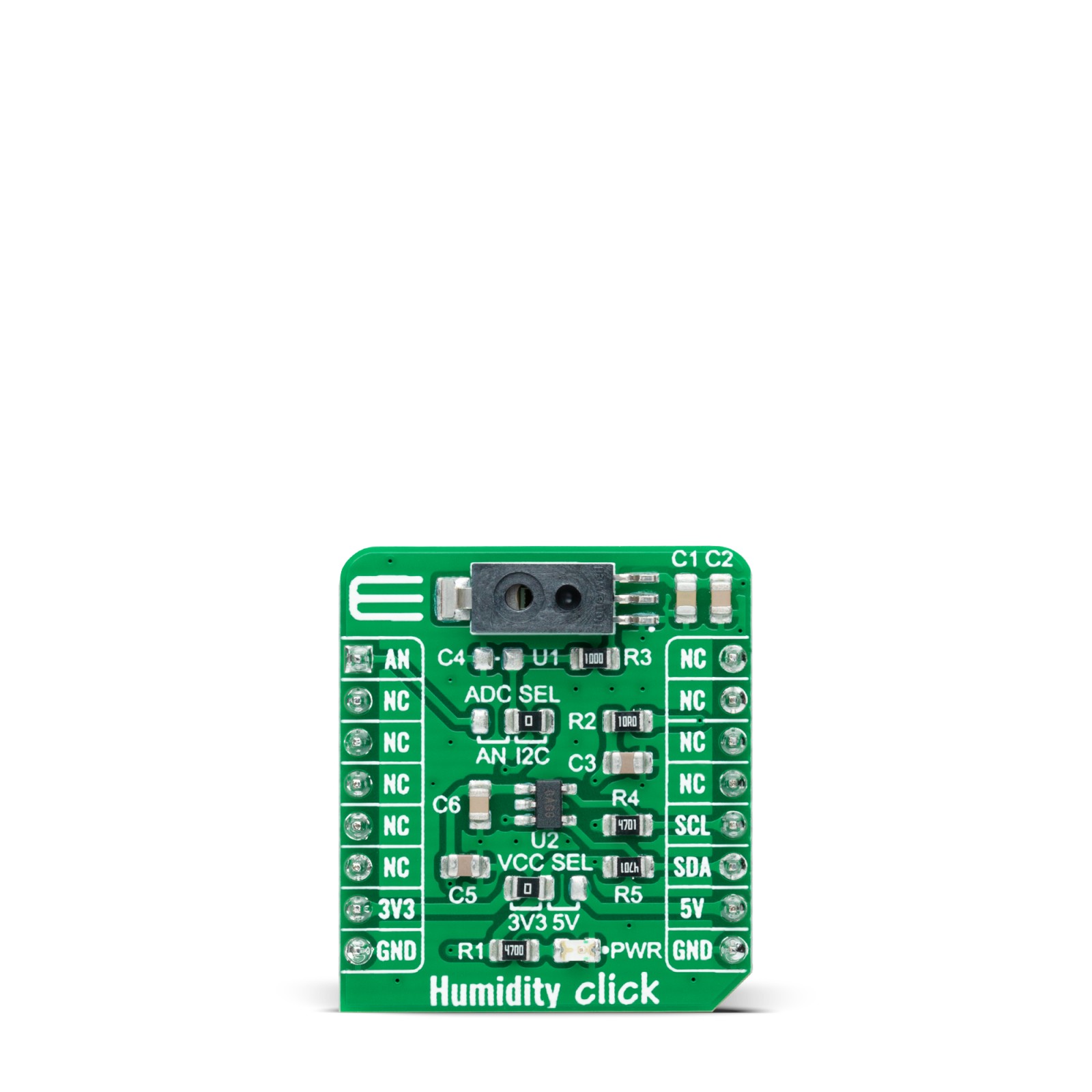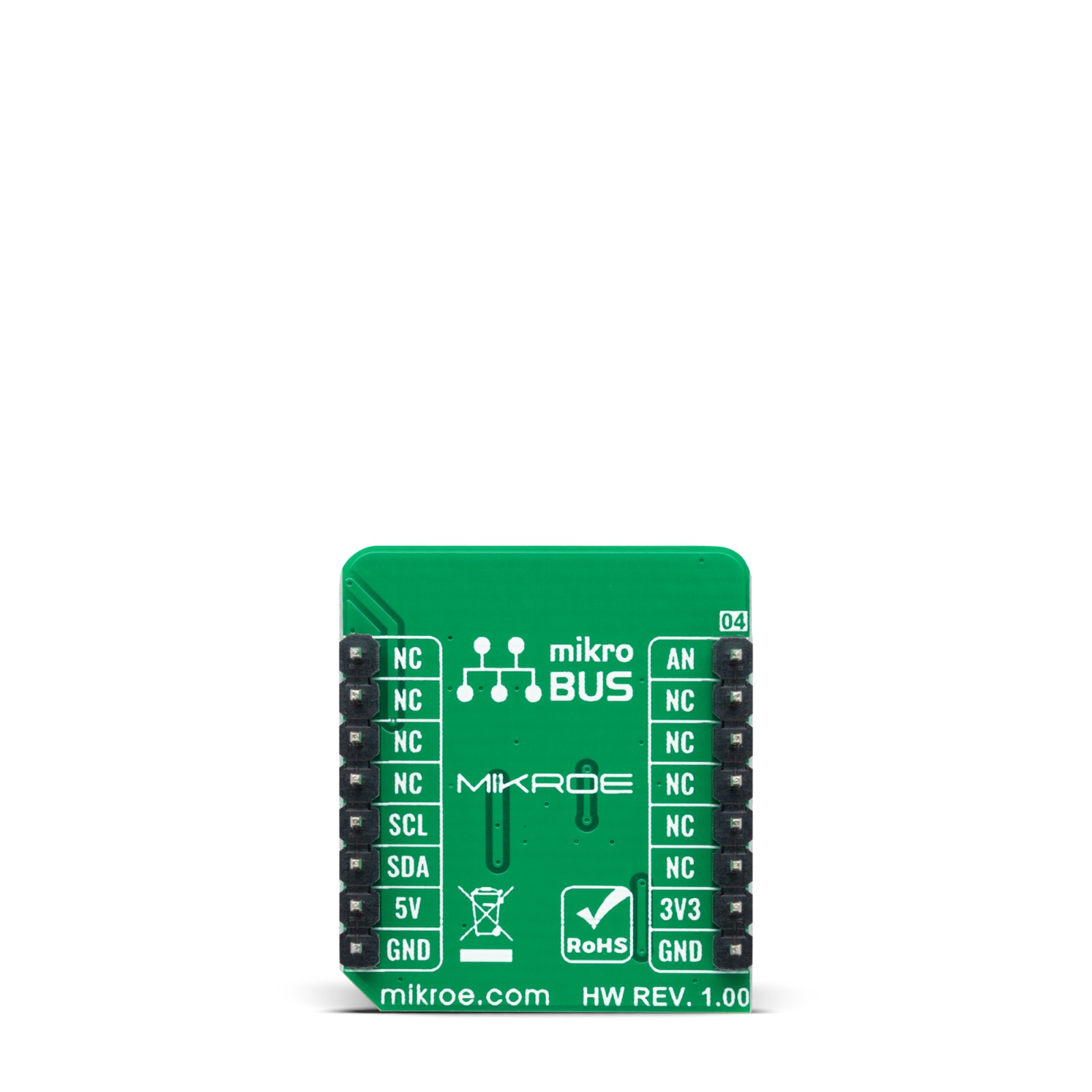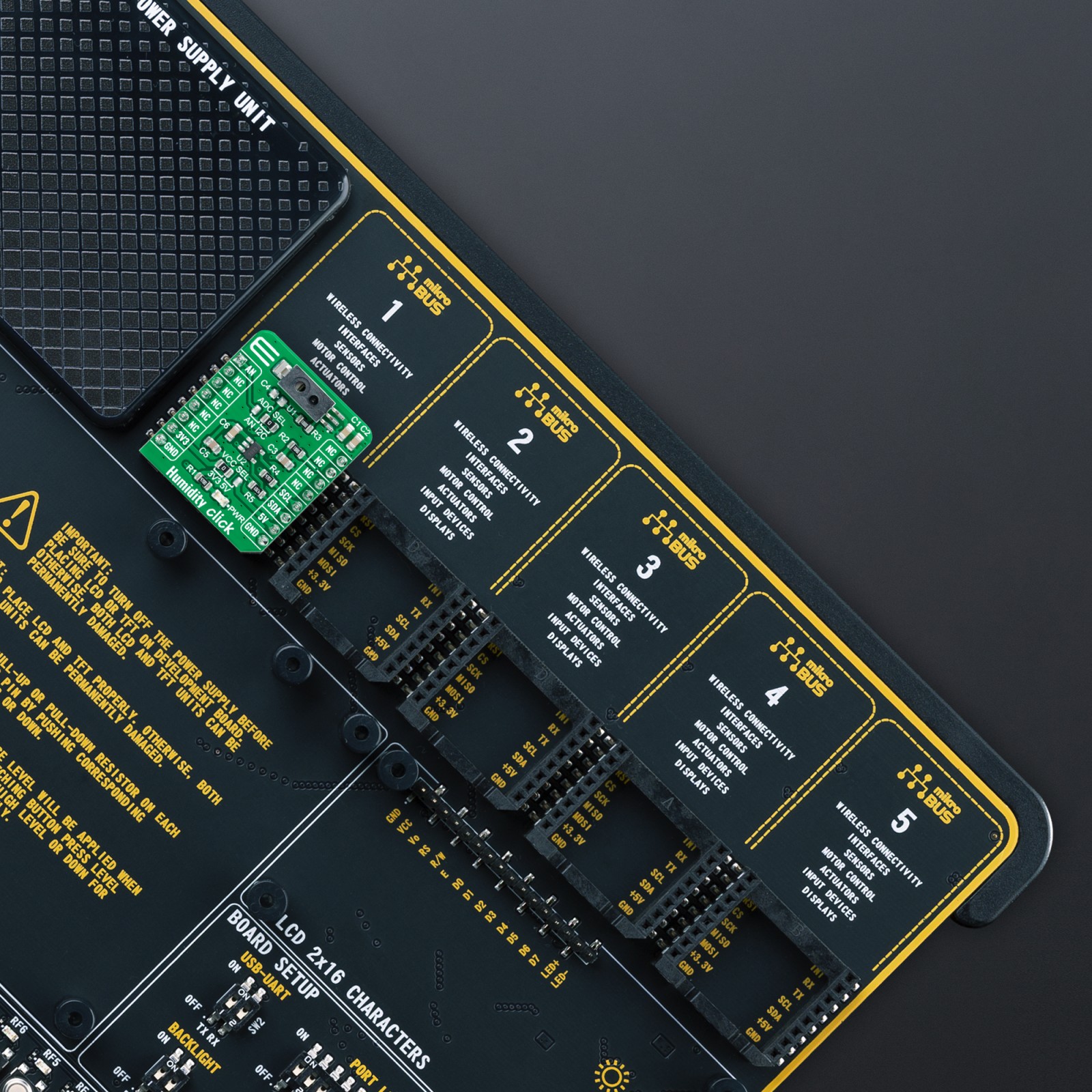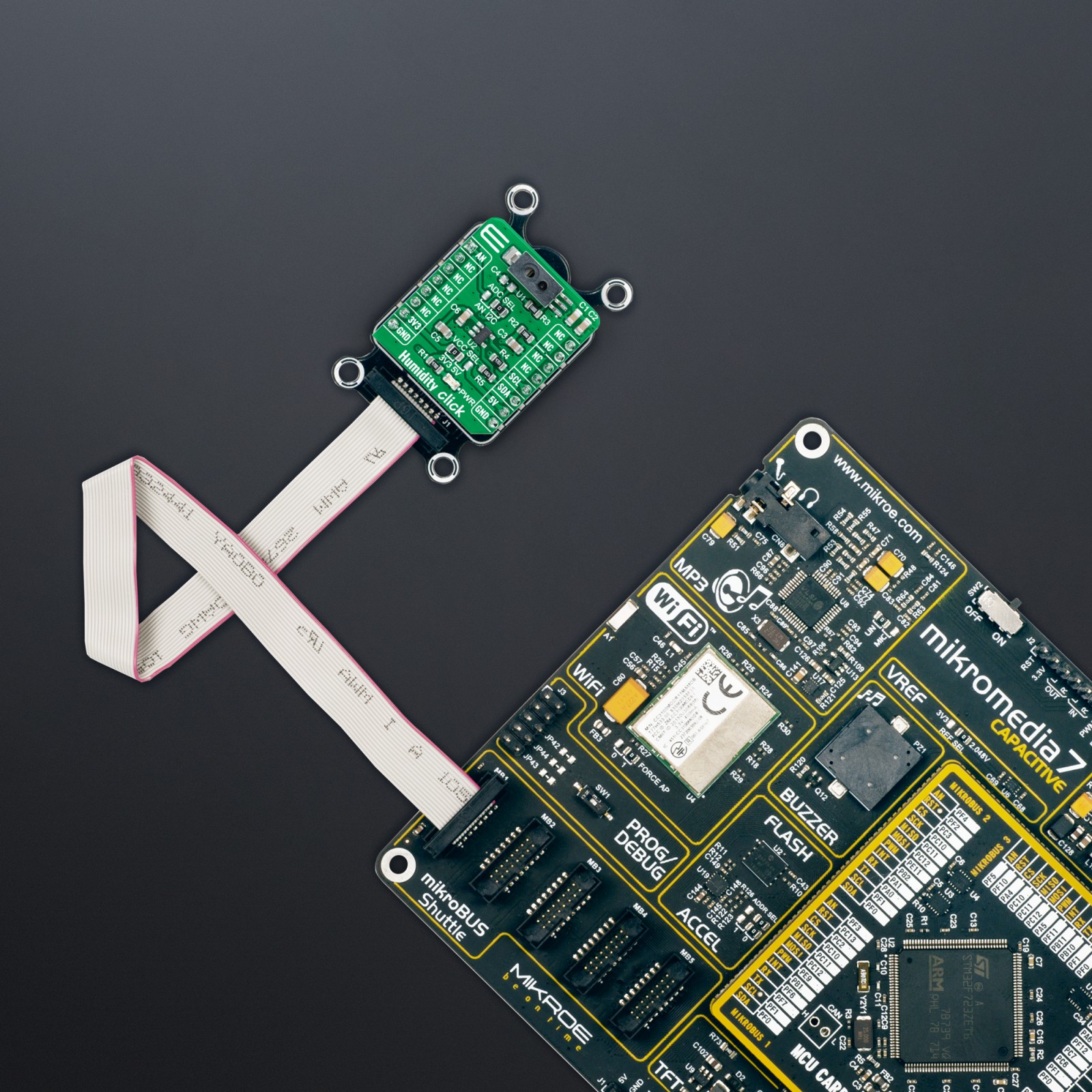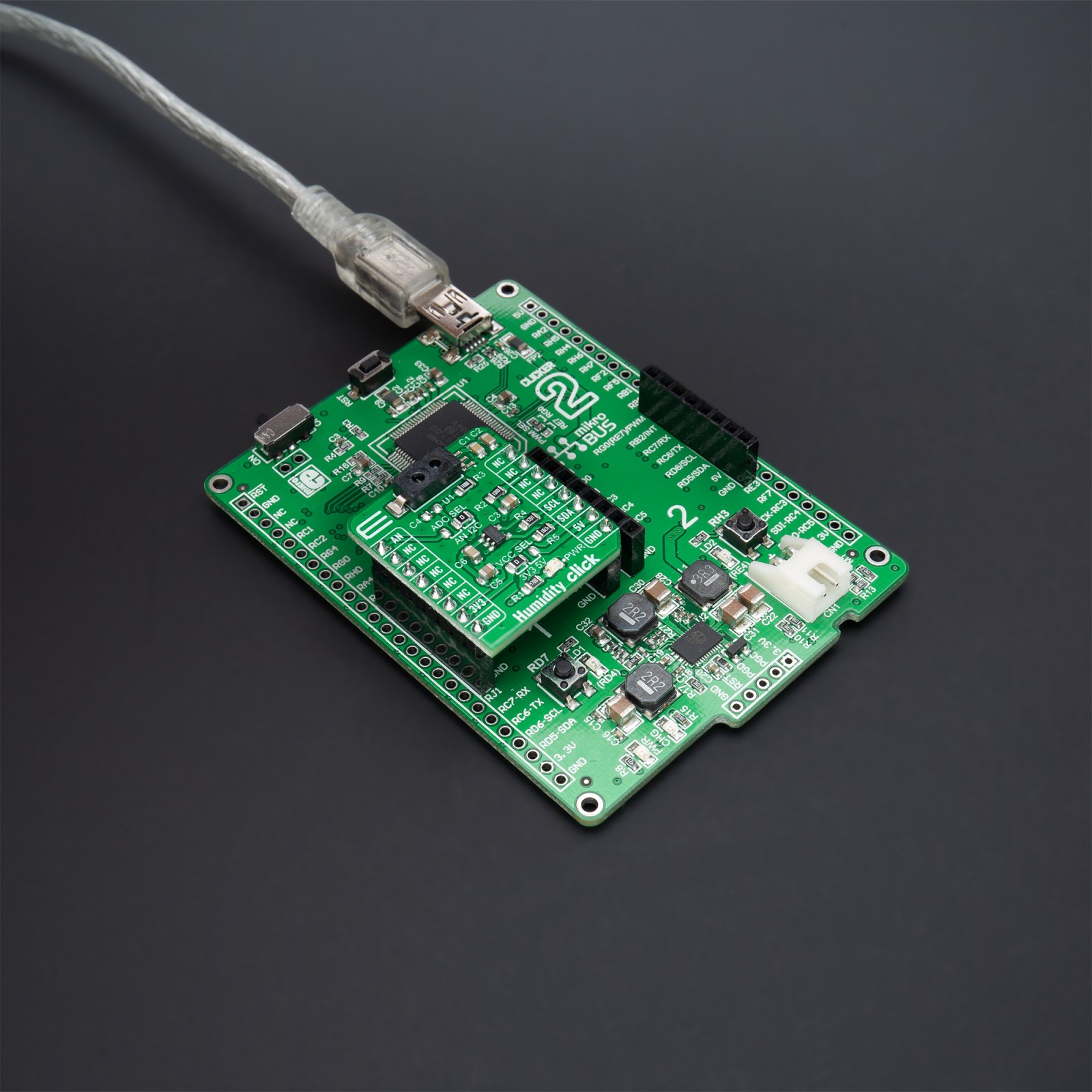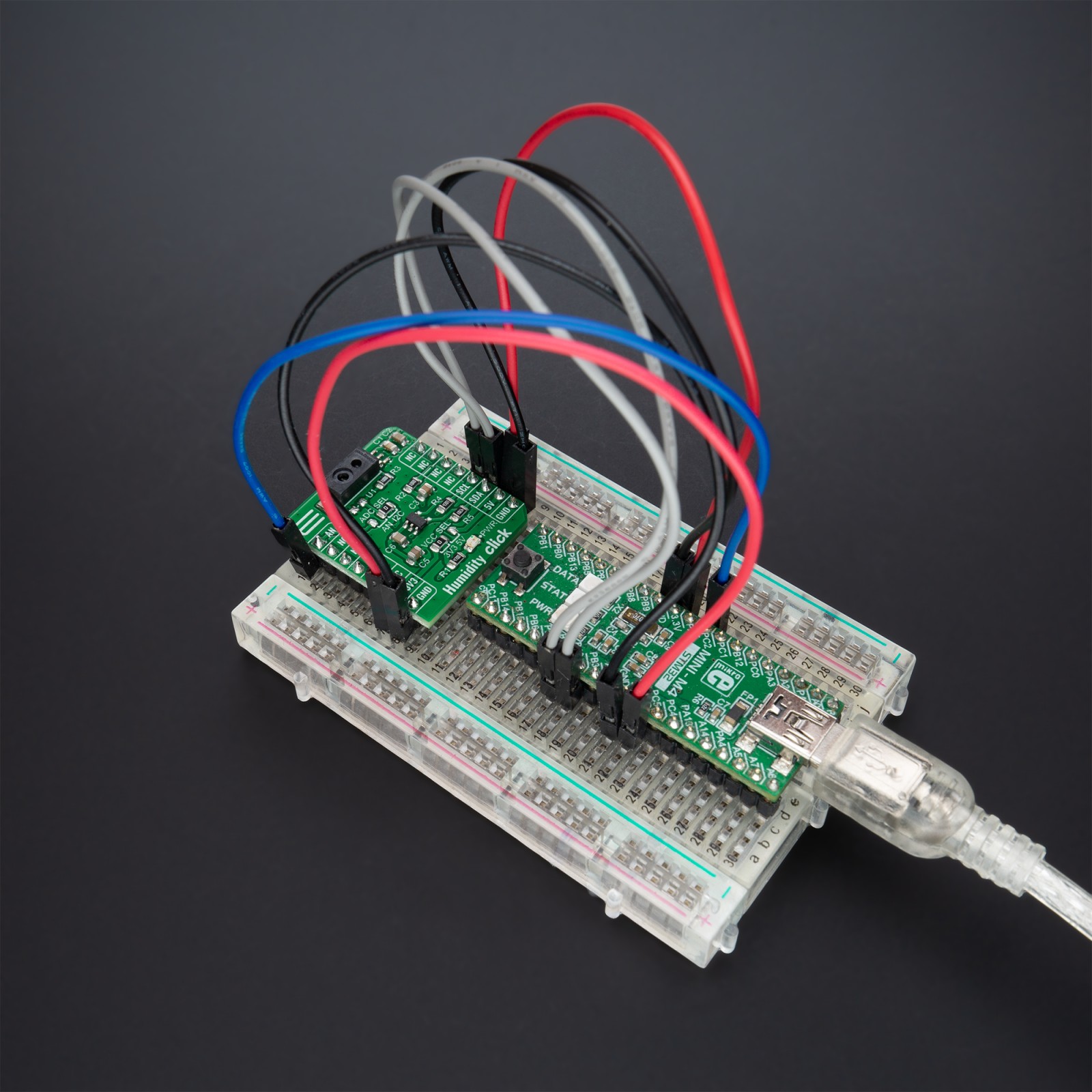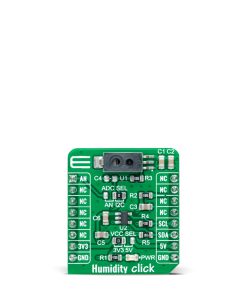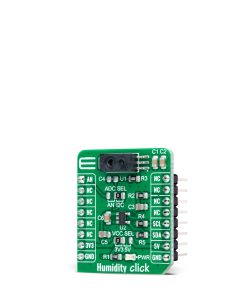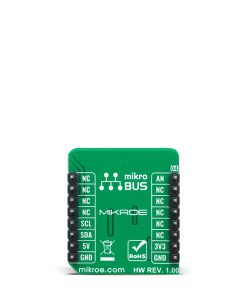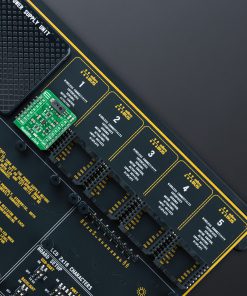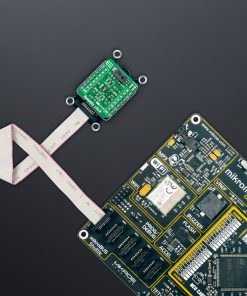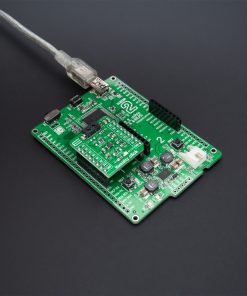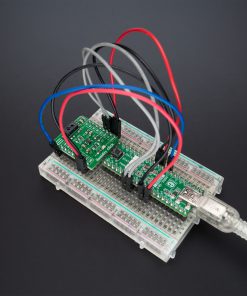Humidity Click
R545.00 ex. VAT
Humidity Click is a compact add-on board used to sense the amount of water vapor in the air. This board features the HIH-5030, an analog output relative humidity sensor from Honeywell Sensing and Productivity Solutions. The HIH-5031 is a covered, condensation-resistant, integrated circuit humidity sensor that is factory-fitted with a hydrophobic filter allowing usage in many condensing environments. The RH sensor uses a laser-trimmed, thermoset polymer capacitive sensing element with on-chip integrated signal conditioning, providing enhanced stability, accuracy, and response time over the entire humidity range of 0%RH to 100%RH. However, the choice of signal processing is up to the user; more precisely, the user can process the output signal in analog or digital form. This Click board™ is suitable for industrial, medical, and commercial applications.
Humidity Click is supported by a mikroSDK compliant library, which includes functions that simplify software development. This Click board™ comes as a fully tested product, ready to be used on a system equipped with the mikroBUS™ socket.
Stock: Lead-time applicable.
| 5+ | R517.75 |
| 10+ | R490.50 |
| 15+ | R463.25 |
| 20+ | R445.81 |

